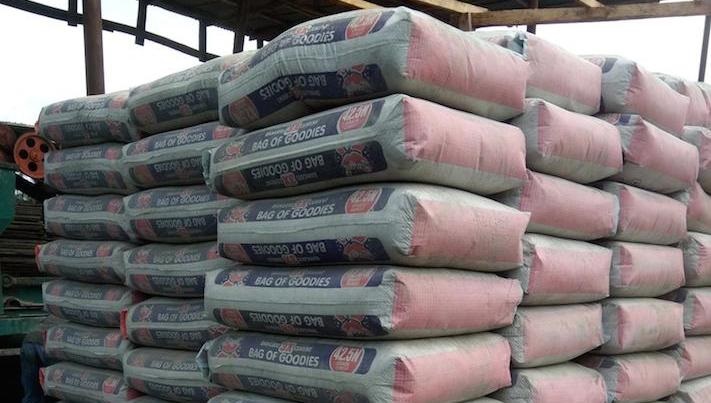These are no exciting times for many Nigerians. If the new year showed promise, rampant inflation in the country has eroded any such promise. On the bus and even across social media, the galloping cost of commodities has become a common refrain of public discourse. Ask the jaded cement merchant why a 50KG bag of cement, only N6500 a week ago, is now worth N8500, and they’ll invariably reply: “Dollar don rise.” At the start of the year, the value of the Naira was N1200 to a Dollar. As of the time this article was written, it was 1510/$
Despite being the biggest manufacturer of cement in Sub-Saharan Africa, producing over 50 million metric tonnes each year, the price of cement in Nigeria has soared in recent months. The hike in the price of cement also explains the rising cost of other locally produced products. Consider, for example, building blocks, which are now priced at N600 and N750 for a 6-inch and 9-inch vibrated block, respectively.
“The price of building blocks rises automatically with the price of cement since they’re produced with cement,” said Idowu Tosin, who manages a block company.
It’s perhaps no surprise why the dollar has become a chorus on the lips of Nigerans. As more and more products are imported into the country, increasing the demand for the dollar, the Naira continues to sink to critical lows. As with cement, this inevitably has knock-on effects on products manufactured within the country as local producers are forced to jack up the price of their goods to make up for the rising cost of living. This is the clear case of home-grown agricultural products, like rice and yams, which have risen astronomically in price just like imported goods.
But the rapid decline of the Naira is not completely to blame. Much of this was occasioned by the removal of fuel subsidy in May 2023. As petrol prices rose at filling stations, so did the price of bus fares. Inevitably, the cost of food items surged as traders grappled with the increased cost of shipping their local produce to urban areas. Transportation fares have only increased further in the months since then. In addition to bad roads and prolonged droughts in parts of the country, rising bus fares have hiked the price of yams, said David Okechukwu, a yam trader in Calabar.
“These tubers you see now cost double the price they were before subsidy removal,” Okechukwu said. “When you tell the customer the price now, they’ll just flee because it scares them.”
Okechukwu complained that sales had dwindled with the high cost of yam tubers. “Before, I used to sell at least 60 tubers a day. Now, if I sell up to 20, I thank God,” he said.
The average Nigerian household spends 59% of its income on food, according to data compiled by Picodi, an e-commerce organisation. But as rising food prices mount on Nigerians, many households have been forced to cut down on the amount of food. “We do without most things in our food compared to before reason being everything is high, even cooking gas,” Mrs. Benjamin said. To illustrate, the price of cooking gas has increased to 1400 per kilogramme.
Sadly despite the hike in the cost of living, Nigeria’s minimum wage remains at N30,000 monthly. In a Sunday interview on Arise News, Joe Ajaero, the president of the Nigeria Labour Congress, admitted that the new minimum wage would be around N1 million if the country’s inflation remained unchecked.
“You will remember that by the time we were contemplating N200,000 (as minimum wage), the exchange rate was about N800/N900 (to a dollar). As we talk today, the exchange rate is about N1,400 or even more,” Ajaero said.
Adjusting the monthly minimum wage in accordance with inflation has long been a bone of contention between the labor union and the federal government. Since the removal of petroleum subsidy, organized labor has pushed for a higher national income to offset the hardship brought on by the policy.
It’s not exactly sure how long this decline in Naira will last but the effects are acute in many Nigerian households.
Many Nigerians are facing challenging times due to rampant inflation, which has significantly increased the cost of living. The value of the Naira has dropped from N1200 to N1510 per Dollar, exacerbating the price increases. A 50KG bag of cement has risen from N6500 to N8500, affecting the cost of related products like building blocks. The inflation is partially attributed to the removal of fuel subsidies in May 2023, which increased petrol prices and, consequently, transportation costs, impacting food prices.
Local agricultural products, such as yams, have also seen substantial price hikes. Okechukwu, a yam trader, reported a decline in sales due to higher prices. Households, spending 59% of their income on food, are cutting back to manage costs, with the price of essentials like cooking gas also climbing.
The minimum wage remains at N30,000 monthly, despite the high cost of living. Labor unions are advocating for higher wages, with Joe Ajaero of the Nigeria Labour Congress suggesting that without controlling inflation, the minimum wage would need to be around N1 million to be viable.
Nigerians continue to struggle with these economic pressures, and it's uncertain how long the currency devaluation will persist.






